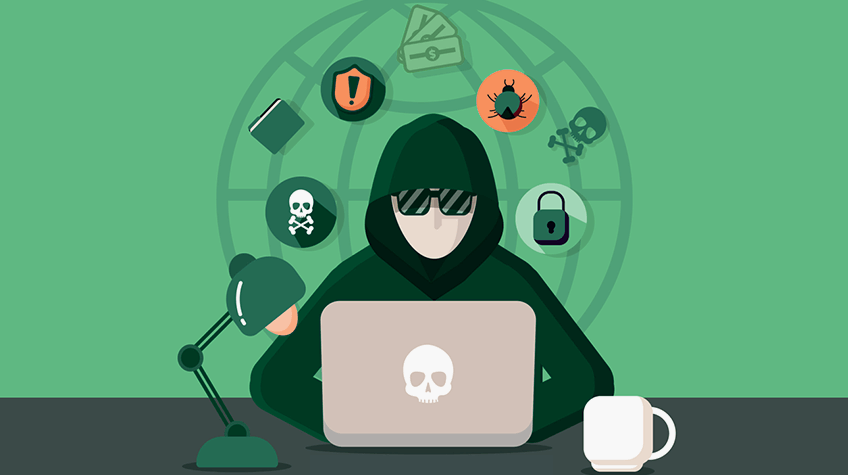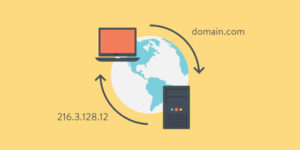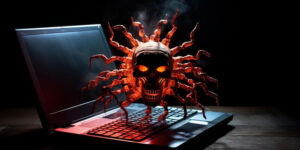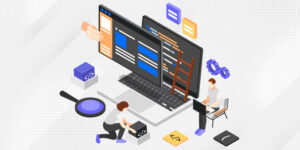
The Internet has provided all of us with immense ease and comfort. However, there’s no denying that online criminals and hackers are out there, trying to cause havoc. One way they wreak havoc is by spreading malware. You must be wondering what is malware and how it creates havoc for any business. Well, to understand malware in-depth, you will have to read this post. Here in this post, we shall address the issue along with the ways to prevent malware attacks.
Ready to explore more???
Let’s get started…
Table of Content
| What is Malware? Most Common Types of Malware How does malware spread? What can Malware in Computers do? How to know your computer is infected? 11 Tips to Prevent Malware Attacks |
What Is Malware?
“What is malware” is the frequently asked question. It is the first thing that come to mind when our systems get infected. Well, here is what it is…..
Malware, also known as malicious software, is defined as flawed software designed to infiltrate, damage, or attack your system without your permission or knowledge. It is a broad term used by computer professionals to describe software that performs specific tasks using a variety of hostile, disruptive, or obnoxious software or program code.
It includes computer viruses, worms, Trojan horses, and the majority of Rootkits, spyware, adware, botnets, and other malicious and unwanted software. With the rise of online marketing and official exchanges in cyberspace, cybercrime, such as malware, began to spread far and wide and attack victims’ systems. Malware infects computer systems to impair, or to exploit the computer or network in order to:
- Steal or damage sensitive information or data.
- Interfere with or modify core functions of the system.
- Monitor user activity without their consent.
- Swindle money or blackmail.
- Introduce spam, pop-ups, or forced advertising;
- Or even send bogus emails from your account to your clients or others to tarnish your reputation.
Now that you’ve understood “what is malware,” let’s take a look at the different types of malware.
Here we go…
Most Common Types of Malware
Virus: A virus is a sort of computer program that, when implemented, replicates itself by altering other computer programs and embedding its own code. If this replication succeeds, the affected system is then said to be “infected” with a computer virus.
Spyware: Spyware is malware that gathers data from people without their knowledge.
Worm: A malignant computer program that replicates itself and sends copies of itself to other computers over a network.
Trojan: A Trojan is one of the malicious programs that masquerades as a useful application but, once installed, endangers your computer or steals your data.
Adware: Adware is malware that automatically plays, exhibits, or downloads advertisements on a computer.
Ransomware: Ransomware is a software that uses encryption to prevent a target from accessing its data until a ransom is paid.
Fileless malware: Fileless malware does not initially install anything; instead, it modifies files that are indigenous to the operating system, such as PowerShell.
Rootkits: A rootkit is a software that grants intruders full administrative access to a victim’s computer. Rootkits can infiltrate applications, kernels, hypervisors, and firmware.
Key loggers: A keylogger is yet another type of spyware that tracks usage patterns. Keyloggers have legitimate applications; many businesses use them to monitor employee activity.
How does malware spread?
There are myriads of ways malware can spread, such as:
- Through infected applications or websites.
- When you download or install infected software, malware spreads on your computer.
- They can also infiltrate your computer via email, email attachments, or a link.
- They can even come via fake internet advertisements.
- Then some infected websites and platforms spread malware.
- Users are frequently duped into downloading malware by links or pop-ups that appear legitimate, such as flashing messages such as, “Your computer has been infected.”
- Unknown programs that claim to convert files, unzip files, or find discounts
- In exchange for clicking a button, “prizes” or “perks” are offered. Most of the time, this causes significant damage to your system.
- Sometimes users click the link or button; they are taken to a website that automatically installs the software.
When malware infiltrates a computer, it attaches itself to various files and overwrites the data. Some malware must be executed before it can be activated, whereas others spread immediately. Malware infects the computer it moves into as it travels through the network.
Wondering what malware can do to your computer… Read ahead!
Related: 10 Ways How Mobile App Developers Protect and Secure User Data
What can Malware in Computers do?
Well, malware in a computer can affect it in myriads of ways, such as:
- It can impact your computer performance. Because malware self-replicates, it consumes a large amount of memory, resulting in the slow performance of your computer.
- It can crash the operating system. Malware in a computer can corrupt its memory. It has the ability to delete critical data from the registry key required for the operating system to function normally. If malware infects a computer and deletes or overwrites any of the vital registry keys, the computer will crash.
- It can consume and steal your internet data. If your internet consumption rate is high, even when you’re not using it to that extent, it means your computer is infected.
- It can obstruct your computer activities. Malware is programmed to generate unwanted pop-ups and advertisements. Once you have malware in your system, especially adware, Ads, and pop-ups will continue to disrupt your daily activities. They won’t go until you remove them.
- It can encrypt your files. Malware on your computer has the ability to encrypt your files. Sometimes paying for the encryption key is the only way to restore them. Such malware is called ransomware. More often than not, victims do not receive the encryption key from the hackers despite paying the ransom. Malware infects computers by appending code to the end of file names, which an encryption key can restore.
- It can destroy computer programs. What if your video editor, MS Word, or Adobe Reader suddenly stopped working? Isn’t it exasperating? Malware in your computer can do all of these without letting you know. It can destroy critical computer applications by overwriting the files.
- Lastly, it robs you of your personal information. Yes, you read it right your personal information, such as your credit card details, bank account details, and passwords, are at risk if your computer is not secure.
How to know your computer is infected?
There are motley indicators that suggest your system is infected with malware or has been attacked by malware. Infected devices or systems typically display the following symptoms:
- System performance that is unusually slow or frozen
- Unauthorized creation of new files or folders.
- Constant spam and pop-up advertisements on your computer.
- System failures on a regular basis.
- The appearance of unknown icons on your computer system can be another symbol.
- Redirection from a well-known website to a lesser-known one; and so on.
11 Tips to Prevent Malware Attacks
There is no way you can prevent malware attacks completely, but there are ways to detect and block them and prevent your systems from getting infected with malicious software. Here are the ways:
1. Use anti-virus software
Without assistance, you have no way of completely preventing or removing malicious programs because malware creators attempt to design them to be non-removable and difficult to find. It must include professional support to detect and permanently remove Adware, Spyware, Keyloggers, Worms, Trojans, Hijackers, Rootkits, Password Stealers, Rogue Anti Spyware, Tracking Threats, and other malware attacks that can cause system sluggishness, annoying pop-up ads, personal information loss, system settings changes, and other issues.
The market is swamped with numerous quality anti-virus software, such as Quick Heal. Using a good anti-virus can help secure your computer. Anti-virus software scans computer files for malware and removes them.
2. Use secure authentication methods
It is critical to use secure authentication methods because insecure methods are easily exploited by hackers. There are sundry ways to achieve this, including:
- Using strong passwords with at least eight characters, including an uppercase letter, a lowercase letter, a symbol, and a number, can help.
- Biometric tools such as fingerprints, facial recognition, voiceprints, etc., should be used.
- Use a PIN or security questions in addition to a password to enable multi-factor authentication.
- And lastly, avoid saving passwords on a computer or network.
Also See: Best Practices for Network Security
3. Keep your software updated
Unquestionably, no software provides complete protection from malware. However, software vendors release patches and updates regularly to address any new vulnerabilities that emerge. The best is to validate and install all new software patches, update your operating systems, browsers, software tools, plug-ins, etc., on a regular basis, and execute routine maintenance to ensure all software is up-to-date, and yes, don’t miss to check log reports for signs of malware.
4. Scan all your downloads
Every day, countless apps are downloaded from the Internet. It is difficult to tell which ones contain malware. Installing an application without first scanning puts your computer at risk. Scanning determines whether a file is harmful or safe. If you don’t have an anti-malware program that can automatically scan a file, some websites can scan a download by clicking on the download link. Also, it is advised to check out the Android apps that contain malware. Because when you connect your phone to your computer, the malware is transferred from one device to another.
5. Use administrator accounts in extreme circumstances
Malware frequently has the same rights as the active user. Non-administrator accounts are typically denied access to the most sensitive parts of a computer or network system. As a result, it is best to refrain from using admin rights to browse the web or check email. The best is to log in as an administrator only to perform administrative tasks, such as changing configuration settings or installing software. Also, don’t miss verifying the software before installing it.
6. Install a firewall
A firewall is a dedicated software or appliance that serves as a shield for a computer system or network, preventing unauthorized access while allowing authorized communications. It is a device installed with powerful centralized management and reporting tools to thwart unauthorized users from unauthorized access of private networks that are connected to the Internet. Installing a firewall can help you prevent any unauthorized access to your private network.
7. Implementing a secure culture across the organization
Employees should be instructed to be suspicious. When someone receives an unexpected email that appears to be from the office management, they should feel free to call that person to confirm. You can help reduce the risk of your employers being duped by phishing or other tactics and unintentionally introducing malware into your network by educating them on a regular basis.
8. Keep your computer clean
Keeping your computer clean is very important. For that, you can install a registry cleaner with advanced features that can provide you with absolutely expert solutions to clean out obsolescent entries, extra gaps, embedded keys, empty registry keys, remove junk files, and clean up your web activities on purpose to keep your personal information safe.
9. Be wary of freeware programs; many of them contain malicious software
Surprisingly, a large number of software companies provide freeware products to their customers. Before downloading “free” music or a movie player, check its security level. You can use Google Toolbar or Microsoft Bing for that. Doing so will help you avoid downloading malware or bugs that are responsible for infiltrating your privacy, inundating you with pop-up windows, slowing down, or crashing your computer. The most effective way to remove various types of malware is to perform a flawless installation.
10. Verify all downloadable links
More often than not, we tend to download anything and everything that comes our way to save our time. But it’s not a good practice, believe you me. Malware in your computer can seriously harm your data or files if left unchecked. It is preferable to protect your computer and network to prevent malware attacks. Though it’s not easy to detect malware in a system, using preventive measures, one can avoid malware attacks. One method for preventing malware attacks is to verify each downloadable link before taking any action. For example, if you’re watching a video or reading an article, don’t immediately click on the link when the author directs you to another page to download or read more. It is preferable to first check if the link is secure. You can use a website like URLVoid to scan the link and see if it’s safe.
11. Set up email security and spam filtering
Email is one of the most important business communication tools, and at the same time, it is a common malware distribution channel as well. This means it is very easy to get malware through emails. So, to prevent malware attacks, you should scan all incoming email messages for malware, including attachments. Apart from that, spam filters can be used to reduce unwanted emails and restrict user access to only links, messages, and email addresses approved by the organization.
Putting it all together…
So this is all about what is malware. Keep in mind that malware attacks can be disastrous for your businesses. They can cause significant financial and reputational harm by disrupting critical workflows and stealing or encrypting vital data. Use these 11 tips mentioned in this article to prevent malware attacks. In addition, don’t miss taking regular backups to offline storage. It will help you restore your data from a backup if your ecosystem is infected with malware.






